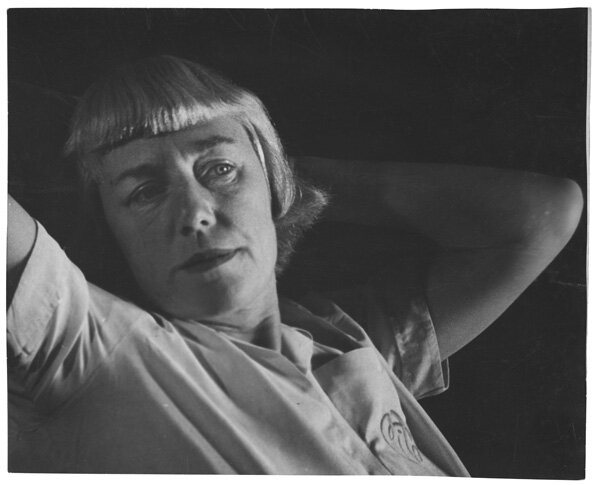Piecing Together Los Angeles: An Esther McCoy Reader looks like your average book. It is bound in the typical trade paperback style and the front and back covers are printed in a gradient of black and blue inks. It is a firm, aesthetically pleasing volume that sits in your palm with a certain sturdiness, a particular heftiness.
Beyond its ordinary appearance, the book is a far cry from your average architectural text as the subject of the book and its primary speaker, Esther McCoy, is somewhat of a wild card when it comes to architecture, writing, and architectural writing. McCoy initially built a career for herself in publishing on the East Coast before sickness pushed her to visit the balmier, mild weather of Southern California to recuperate. After finding little work in the field she was accustomed to, McCoy turned to drafting, a job that would spur a denied application to architecture school, as well as a position on R.M. Schindler’s team on Kings Road. Although McCoy arrived in Los Angeles with every intention of returning to New York once her health returned, she found herself a permanent resident in Los Angeles, a fully-blossomed admirer of its architecture and an ardent writer of its history.
While editor and writer Susan Morgan is responsible for organizing and shedding light onto the writings of Esther McCoy, McCoy’s voice is not presented in a controlled environment with limitations set by research and analysis. Rather, the eclectic selection of correspondences, published and unpublished articles, personal memoirs and case studies work together to produce an image of a woman who ventured into the architecture world with little more than words and confidence and emerged as one of the most prolific architectural writers of her time.
Readers will find that the book will begin to lose its clean, bound rectangular form after the first couple of chapters, and seem to take on the lightness of a stack of onionskin papers. There is something inevitably personal about McCoy’s writing, and what began as another reading book transforms into a venture into McCoy’s own study–it’s as if we had grabbed a handful of drafts from her desk, in its original typewritten script on crisp, translucent sheets.
